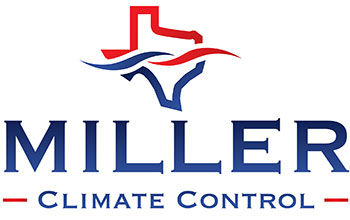
Between a relaxing vacation or an extended trip for work, leaving home means making plans for your home comfort system. You don't need it while you’re on a trip, so you can make adjustments as needed to conserve your energy use. At the same time, you don’t want to just shut it down for the entire time you're gone.
Instead, it’s best to leave your HVAC system on and just raise or lower depending on whether it's winter or summer. That way you can minimize energy costs without worrying about getting back to an uncomfortable home. We’ll explain why you should avoid turning your HVAC system off as well as the best thermostat settings for summer and winter.
Here’s Why You Don't Leave Your Thermostat Alone
While you could be wanting to shut your HVAC system down before a trip, this can end up causing big problems by the time you get back. This is particularly true when the weather will be severely hot or cold while you’re gone.
For example, switching the HVAC system down during the summer could produce very high humidity. Not only will your home feel like a swamp when you have returned, but it could have also invited mold/mildew growth or pest infestations.
And over the winter, not using the furnace could lead to pipes freezing up or even bursting. It’s exhausting to come home from a nice trip only to come across extensive water damage close to a broken pipe.
Energy-Efficient Thermostat Settings While at Work
You can adjust the temperature even as you come and go to work. Considering you’re away for around 8 hours or so, it doesn’t make sense to keep an empty home heated or cooled as if you were there. Generally, it’s suggested to raise the thermostat by 5 degrees or more. That means that if you prefer a comfortable 72 degrees, consider raising it to 76-77 while you’re out.
But you could save even more if you're open to further adjusting the temperature. As reported by the Department of Energy, you might save nearly 10% on your HVAC costs by making an adjustment of 7-10 degrees.
Ideal Thermostat Settings While on a Trip in Summer
If you're on an extended trip in the hottest part of summer, you can make larger adjustments. This prevents wasting energy while still safeguarding your home from the issues that come with leaving it un-air conditioned. Something like 5 degrees is suitable for shorter trips while around 10 degrees is worthwhile if you’ll be out of town for 2 weeks or longer. If you prefer keeping the house at 72 in the summer, 78-82 can offer great results.
Ideal Thermostat Settings While on Vacation in Winter
To figure out the best thermostat setting for a winter getaway, consider lowering the temperature by the same amount you would increase it in summer. 68 is a frequent winter thermostat setting, so adjusting to 63-58 will keep your plumbing safe while minimizing how frequently your furnace runs.
A Smart Thermostat Can Help: Perks of Smart Thermostat Installation
One of the best ways to optimize your home’s HVAC system while away from home is by investing in a smart thermostat. This special type of programmable thermostat uses intelligent software to understand your usual comfort habits. It applies these preferences and makes automatic corrections to the schedule for maximum energy efficiency. And with Wi-Fi compatibility, you can remotely control your heating and cooling using a mobile device or tablet.
Smart thermostats are loaded with features to help you save energy and lower costs. For example, certain models can track electricity prices to bolster heating or cooling when prices are lowest. They are compatible with high-efficiency, variable-speed equipment to refine how long your HVAC system should run. It’s the optimal tool to simplify how you use your comfort system. If you’re thinking about investing in a smart thermostat, there are a variety of ways you can reduce your costs, effectively getting a smart thermostat for free. The next time you are away from home, you can receive true peace of mind that your HVAC system won’t cause any trouble while you’re away from home.

